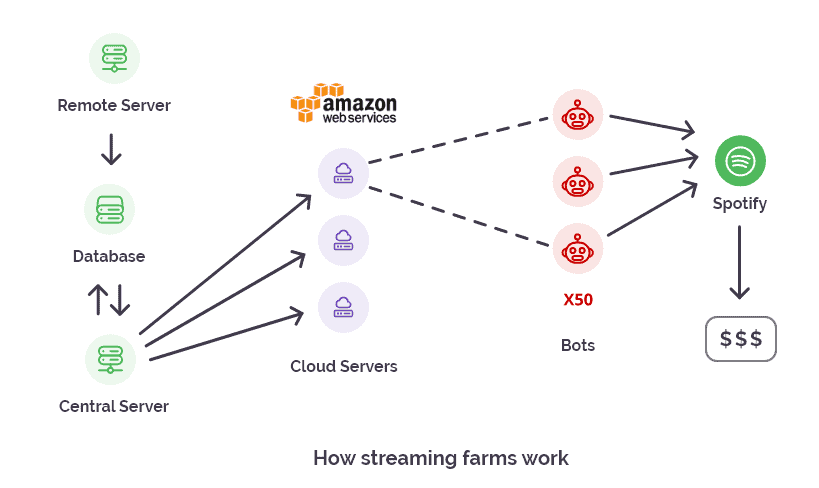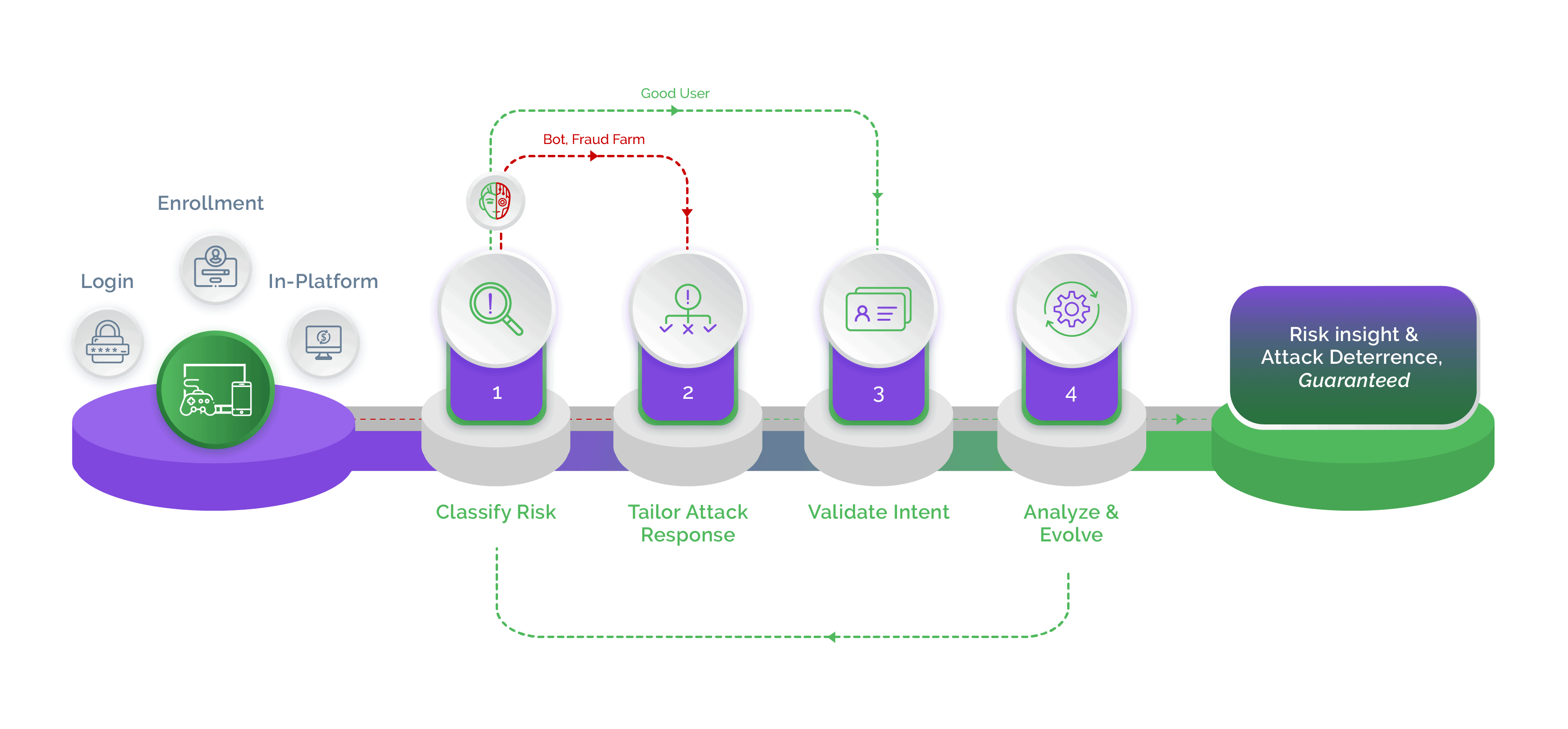What is online digital streaming fraud?
The world of media has undergone a digital revolution, with streaming platforms offering an array of entertainment options such as music, TV shows, movies, web series, and gaming. These convenient services allow users to access their favorite content at their own leisure, on the device of their choice.
The proliferation of smartphones and the internet has fueled a surge in the global OTT streaming market, which experienced significant growth in 2022 and is expected to continue its upward trajectory in the years to come. However, the alarming rate of this expansion, coupled with the anonymity of the online world, has created opportunities for malicious actors to exploit the digital streaming industry for financial gain.
What is digital streaming?
Digital streaming refers to the delivery of audio, video, or other multimedia content over the internet to a user's device in real-time, without requiring the user to download and store the entire file. This technology enables users to access a vast array of media content, including movies, TV shows, music, podcasts, and more, on-demand and from virtually anywhere with an internet connection.
Unlike traditional media delivery methods such as CDs or DVDs, digital streaming offers a high level of convenience and flexibility, allowing users to watch or listen to their favorite content whenever and wherever they want. Popular digital streaming services include Netflix, Hulu, Spotify, and YouTube.
Why is digital streaming becoming popular?
There are several factors contributing to the growing popularity of digital streaming services. These include increasing use of smartphones and access to high-speed internet.
Further, users have the convenience of paying only for the content they consume, which makes digital streaming subscriptions rather affordable. Users also enjoy the flexibility and greater control on the content they want to watch and the duration of the subscription.
What is online digital streaming fraud?
The digital streaming platforms are a hot target for attackers looking to exploit the streams for financial gain. Online digital streaming fraud refers to the attacks on digital streaming platforms whereby attackers use tools such as bots, click farms, and cybercrime-as-a-service to create fake streams and artificially increase the number of viewers, resulting in financial losses to the streaming platform, the artists, and the distributors. Online digital streaming fraud also disrupts the service, degrades user experience, and damages the reputation of the affected platform.

Often, fraudsters use bots to create fake new accounts en masse to overwhelm the service. Using fake new account creation, fraudsters can scam other users, disseminate spam and even disrupt the platform by artificially bloating the streams and the volume of audiences. They also use bots to scale up credential stuffing and account takeover attacks, which are used to hack into genuine user accounts and sell the subscriptions at discounted rates.
Online digital streaming fraud is a growing challenge for streaming platforms, who face an arduous task trying to protect their platforms and users from abuse. Attackers can conveniently hide behind the anonymity that the internet offers and use sophisticated tools to attack the platforms and evade detection.
Factors fueling the rise of online digital streaming fraud
The top reason for online digital streaming fraud is the reuse of credentials. Often, to save themselves of the hassle of creating multiple passwords for their numerous digital accounts, people reuse passwords across accounts. They also create easy-to-remember passwords, which are unfortunately also easy to crack. Poor password hygiene provides attackers with the ability to use stolen credentials to gain unauthorized access to genuine user accounts. And, if the stolen password is used across accounts, all these accounts become exposed to exploitation.
Attackers may buy a list of valid credentials from the dark web or use a number of techniques, namely: credential stuffing, password spraying, brute forcing, and so forth to gain working username-password combinations. Using valid credentials, attackers can successfully authenticate across several accounts and abuse both free and paid subscriptions to artificially increase the plays and the number of viewers.
Online digital streaming fraud is on the rise also because bad actors are extensively using easily and cheaply available bots to scale up the attacks. They can program the bots themselves or simply use bots-as-a-service that are available in plenty and don’t cost much. Fraudsters can also use outsourcing services – such as streaming farms, click farms, or fraud farms – to bloat the streaming numbers, and hence the revenue.
Another cause for the rise in online digital streaming fraud is account sharing among genuine consumers. Paid subscribers often share their account details with friends and family members to save on multiple subscription costs. Nearly 10% of consumers of a leading digital streaming platform have been found to share passwords⁴, causing losses worth $135 million of revenue to the platform.
Impact of online digital streaming fraud
Although there are numerous laws to protect digital streaming platforms, online digital streaming fraud continues to rise. Even stringent policies and terms of use stated by the streaming platforms fail to deter attackers, who continue to launch attacks at scale and cause losses worth millions of dollars to digital streaming platforms.
Online digital streaming fraud causes loss of earnings not only for the streaming platform but also for the artists, distributors, and a host of other entities involved in the creation, marketing, distribution, and delivery of content over digital platforms.
Due to artificial increase in the number of streams and the viewers, the data used for analytics is rendered unreliable, as it does not present the real count of genuine users. Marketers cannot use this data for analysis as the insights would not paint the correct picture, and therefore affect the budgetary allocations and marketing or advertising spends. Not only does adulterated data impact go-to-marketing strategies and budgets, it also increases the risk of non-compliance for the platforms.
The modus operandi for online digital streaming fraud
Attackers are using the latest tools and sophisticated techniques to target the digital streaming platforms. They try to achieve scale at the least possible investments in order to maximize the returns. They also try to complete the attack quickly to minimize the chances of getting detected. Some of the common methods attackers use for online digital streaming fraud are as described below:
- Bots: Bot-driven attacks are the most common mode of attacks on digital streaming platforms. Bots and scripts are programmed in such a manner that they can continue to generate streams, bloat user views, and interact fraudulently, across several platforms non-stop, round the clock.
- Streaming farms: Also called click farms or fraud farms, these outsourced services comprise low-paid human attackers who are used to execute online digital streaming while circumventing defenses that require human interaction. Attackers use these services for their easy availability and low costs.
- Account takeover: Using stolen credentials, attackers try to gain unauthorized access to genuine user accounts. The subscriptions from these compromised accounts can be sold off at discounted prices for quick monetization. Attackers can also use these compromised accounts to artificially increase views, likes and ratings.
- New fake account creation: New fake account creation is a popular tactic used to generate fraudulent streams and inflate play counts. Fake accounts are also used to scam other users, disseminate spam, and overwhelm the platform to disrupt the services.
- Pirated content: Attackers impersonate artists and distribution companies to post pirated content, in an effort to divert streams and views, that ultimately cause financial losses to the platforms and the affected artists and distributors.
How to detect online digital streaming fraud
Digital streaming platforms lose millions of dollars every year to online digital streaming fraud. In addition, online digital streaming fraud damages the brand, which can cause customer churn and therefore affect revenues.
It is critical that digital streaming platforms remain vigilant and monitor user activity to spot anomalies and suspicious activity such that appropriate countermeasures can be deployed.
There are certain signs that digital streaming platforms must look out for to spot and contain online digital streaming fraud attempts: Some of these signs include:
- Unexpected increase in the number of viewers
- Undue increase in stream plays
- Unexplained increase in followers or ratings
- Non-stop, 24x7 media play
- High reference ratio
- Unusual locations in top cities list
- Random recommendations and suggested content
Steps to prevent online digital streaming fraud
Digital streaming platforms have taken strong note of the rising online digital streaming fraud, and are taking steps to counter the attackers’ tactics. They are penalizing violators of the terms of use by removing pirated content, blocking suspicious accounts and deploying appropriate solutions to protect their platforms from automated bot attacks.
In addition, digital streaming platforms have formulated an informal code⁵ that they are voluntarily following to stop online digital streaming fraud.
Prevent online digital streaming fraud with Arkose Labs
Digital streaming platforms are facing an uphill task trying to fight online digital streaming fraud to ensure users’ account security. This is because attackers are using sophisticated tools and automation to scale up their attacks on these platforms.
It is clear that digital streaming platforms cannot adequately protect their platforms with traditional or point defense solutions. Operating as a part of the digital economy, digital streaming platforms need superior security that can help them adapt to the ever-evolving threats while delivering superior user experience.

Arkose Labs helps digital streaming platforms accurately spot online digital streaming fraud attempts and provide the level of security these modern platforms need. Arkose Labs does not block any user, as it might filter out potentially revenue-generating customers. Instead, Arkose Labs triages incoming traffic and assesses the real-time risk associated with each user.
Arkose Matchkey, a huge repository of proprietary challenges, are administered on suspicious users, affording them an opportunity to prove their authenticity. While genuine users clear the challenges quickly, bots and scripts fail instantly. This is because Arkose Matchkey challenges have several versions of each challenge and attackers trying to automate the solution for each of these versions would need to spend enormous amounts of time as well as additional resources. In fact, MatchKey is the strongest CAPTCHA ever made.
This delay in solving the challenges and rising costs act as a deterrent because the cost of attacks increases and the returns come to naught. As a result, attackers give up for good and move on to unprotected targets.
Using Arkose Bot Manager, supplemented by 24x7 support and actionable insights, digital streaming platforms can achieve long-term protection while their security teams acquire the capability to quickly adapt to the evolving attack types.
